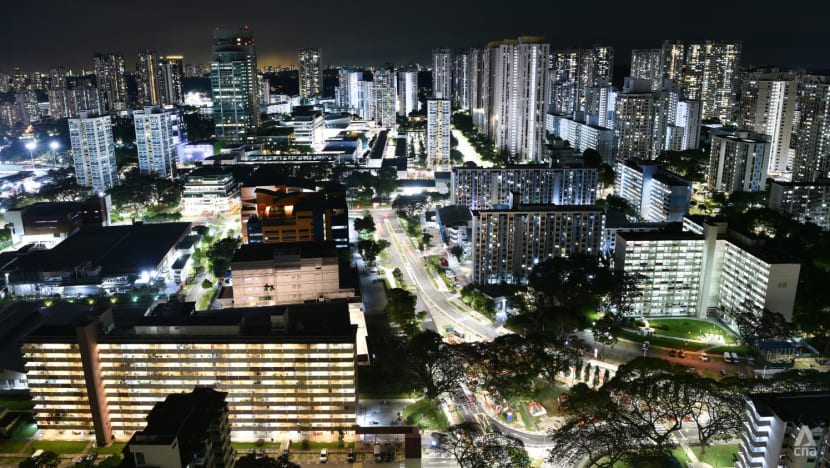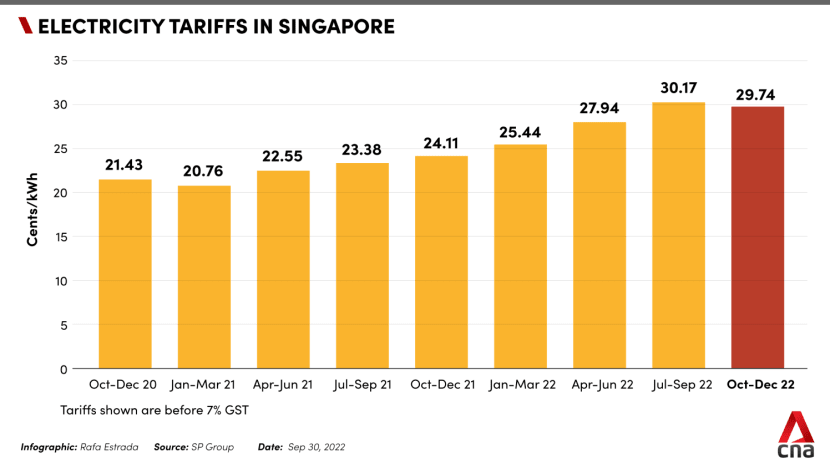Lower electricity tariffs from October to December after 6 consecutive hikes

HDB flats at night in Toa Payoh (Photo: CNA/Jeremy Long)
SINGAPORE: Electricity tariffs will be lower for the October to December period compared with the previous quarter, SP Group said on Friday (Sep 30) after six consecutive quarters of increase.
For the period from Oct 1 to Dec 31, the electricity tariff, excluding Goods and Services Tax (GST) will decrease by an average of 1.4 per cent or 0.42 cent per kWh compared with the previous quarter, said SP Group in a news release.
"This is due to lower energy costs compared with the previous quarter."
The electricity tariff for households will decrease from 30.17 to 29.74 cents per kWh, excluding GST, for the quarter ending Dec 31. The average monthly electricity bill for families living in HDB four-room flats will decrease by S$1.55, before GST, said the group.

Last quarter, electricity tariffs went up by an average of 8.1 per cent, mainly due to higher energy costs driven by rising global gas and oil prices exacerbated by the conflict in Ukraine.
SP Group reviews the electricity tariffs every quarter based on guidelines set by the Energy Market Authority (EMA).
The electricity tariff consists of four components – energy costs paid to the generation companies, network costs and market support services fees paid to SP Group, as well as market administration and power system operation fees paid to the energy market company and power system operator.
The energy costs component is adjusted quarterly to reflect the changes in the cost of fuel and power generation.
The fuel cost is the cost of imported natural gas, which is tied to oil prices by commercial contracts.
The cost of power generation covers mainly the costs of operating the power stations, such as the manpower and maintenance costs, as well as the capital cost of the stations.













